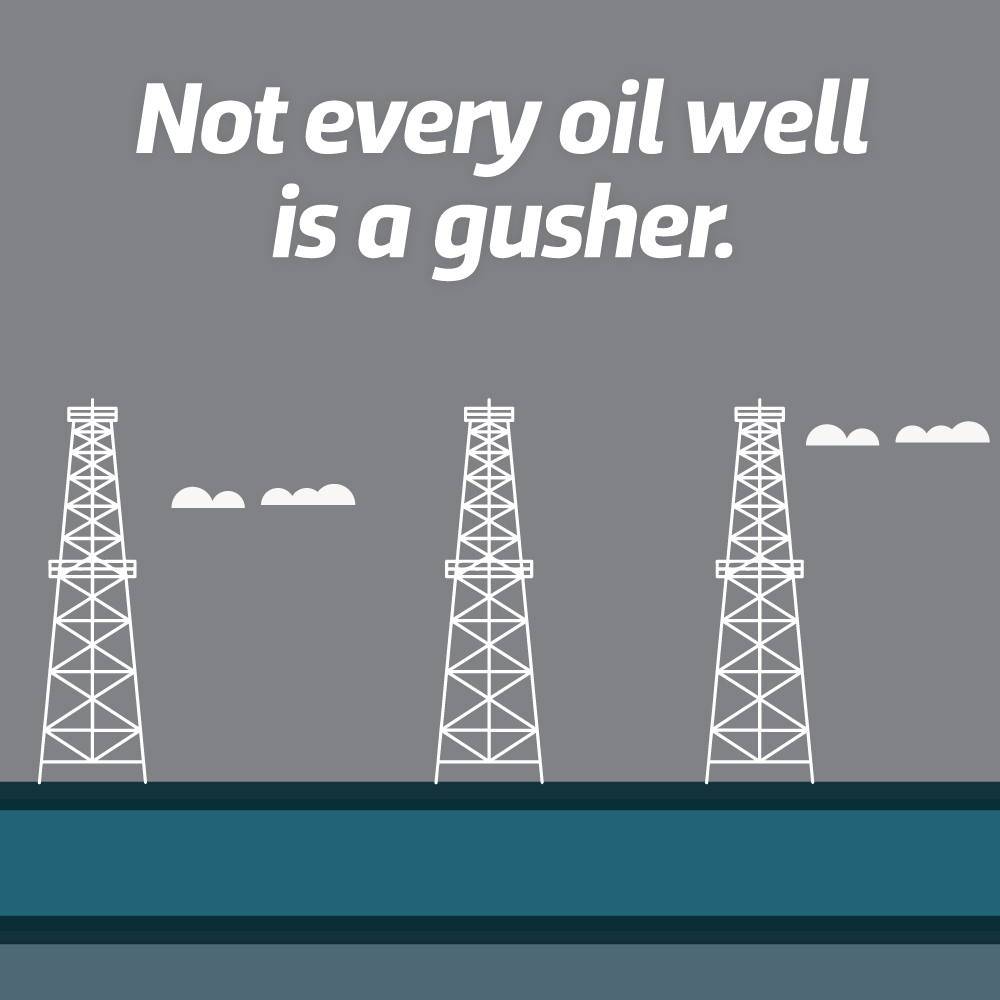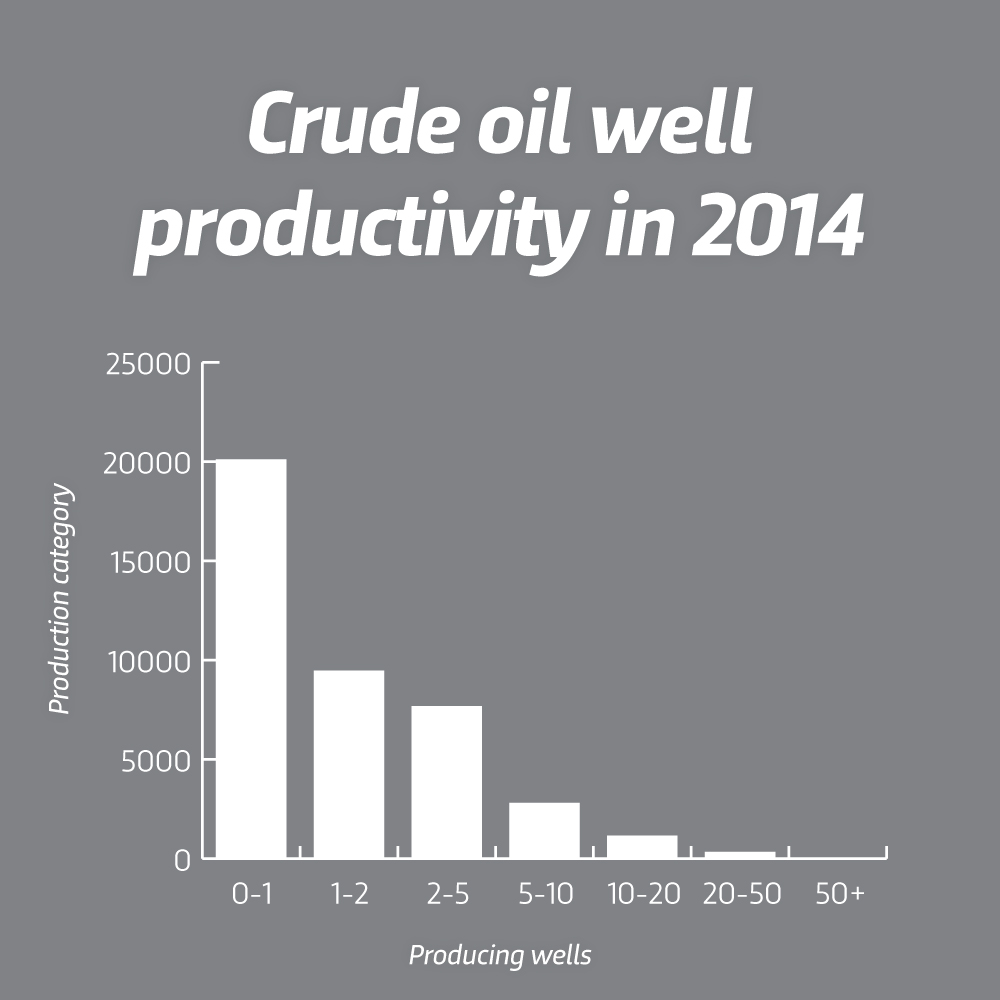Not every oil well is a gusher

Something that’s important to remember is that crude oil production is a risky business. There’s a lot of exploration and science that goes into figuring out where to drill a well, but a company never knows precisely how things look underground. Sometimes things work out as planned, and sometimes they don’t.
As a result, there are a number of cases where a company drills a well, but the well is unsuccessful – nothing or very little comes out. In that case, the investment that the company put into the well is lost. The well doesn’t produce enough oil (and hence, not enough revenue) for it to be economic.
Even when a well is successful (that is, enough oil comes out to make the well economic), the amount it produces can still be quite low. Not every oil well is a gusher.
In fact, the vast majority of oil wells in Alberta today produce relatively small amounts of oil.
In fact, in 2014, almost half (48%) of all producing oil wells in Alberta produced only between zero and 1 cubic metre (or 6.3 barrels) of oil each day. Another 23% of all producing oil wells produced between 1 and 2 cubic metres (i.e., 6.3 – 12.6 barrels) each day.
Of the 41,601 total producing oil wells in Alberta in 2014, only 364 wells in the entire province (or less than 1%) produced 20 cubic metres (125.8 barrels) or more per day.

Why is this? There are several reasons.
One is that the biggest and generally most productive oil pools tend to get found first. They are both larger in area (so they’re easier to stumble across), and are the most valuable. So they are what explorers look for most, sometimes ignoring much smaller possibilities. In Alberta, the largest oil pools were generally found early.
You can see how average pool sizes fell through the 1980s and 1990s. Small oil pools tend to have fewer and lower productivity wells.
All of this means the average crude oil well in Alberta has been getting less productive over time
A second reason is that all wells, no matter how productive they are to start, decline in productivity over time. Oil pools are generally found at high pressure, since they’re usually sitting under kilometres of rock.
As the oil is produced, this pressure goes down. And in turn, less oil is produced. Think about one of those inflatable swimming pools for little kids. When it’s fully inflated, there’s pressure inside. When you first start to deflate the pool, the air will rush out on its own. But as air comes out, the pressure inside the kiddie pool gradually falls, and less air comes out on its own. Eventually, to get the last bit of air out, you have to add more pressure (by rolling it up, or squishing it, etc.)
For this reason, oil field operators will often pump water into oil pools to maintain pressure, so that the well can continue to recover oil. But even if you have “pressure maintenance”, the amount of oil recovered by the well will still decline over time
Even if a particular well is a “gusher”, it will produce the majority of its oil during the first few years of its life. After a number of years, the well’s daily production will typically stabilize at a fraction of what it was when it was first drilled. The well can then go on for many years producing that same, lower amount.
Alberta’s oil well profile has started to change in the last few years.
New high-cost, long horizontal fractured wells in many areas of the U.S. (and in Saskatchewan and Alberta) have very different production profiles. They produce at a much higher initial rate, but they also decline at a much higher rate.
There has been enough production from these new wells to reverse the long-term overall decline trend. And they are fed by very large areas of low permeability rock that has oil throughout. (The oil hasn’t had enough time to move through that very dense rock to form conventional pools of oil and gas.)
This rock is very thick, and covers large areas of the province. So there are enormous amounts of oil to be found in the future. But it is produced with different technology, different practices, and in different locations in Alberta than the conventional oil that has been produced from the 1920s until today.
All of this is important to think about as we consider how to optimize Alberta’s royalty framework.
Source: Alberta Energy; Alberta Energy Regulator